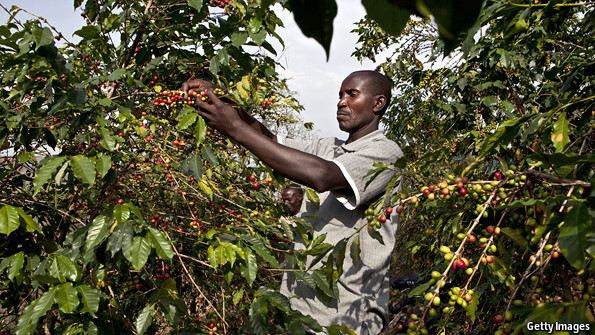 Ugandans are set to benefit from a line of new coffee variety that are resistant to the rampant coffee wilt disease that has wiped out over 15 million coffee trees .
Ugandans are set to benefit from a line of new coffee variety that are resistant to the rampant coffee wilt disease that has wiped out over 15 million coffee trees .
The new coffee varieties which have been bred from the country’s research institute National coffee research Institute NACORI and NARO is expected to turn around the negative tide that has characterized Uganda’s coffee escapades in the recent years. According to Francis Chesang a production manager at the Uganda Coffee Development Authority, the new coffee variety is not only disease resistant but also has a higher yield capacity of over 20 percent.
The researchers released the new variety in 2009 and since then, quality field tests and seeds multiplication have taken center stage before delivering them to the final farmer. “We are going to start availing the new coffee varieties to the farmers in 2016 we are going to use phase approach to discourage total wiping out of the old crops. For instance if a farmer has 100 acres of coffee, he will begin with 20 acres and gradually every year add more until he has phased out the old crop,” explained Chesang.
UCDA has already delegated 145 nursery stations country wide to multiply the new coffee varieties after successful tests of quality, yield and disease resistance. We already did the cupping tests where these varieties were found to be superior to the current crops in the field and therefore hope that in the next four years, the coffee from Uganda will be unrivalled in the international market.
Given the altitude conditions in the country, Chesang noted that they will distribute both Arabica and Robusta in the ratio of 20 and 80 percent respectively. Arabica requires high altitude with the largest parts in the country not attaining that point save for Mt. Elgon and Mt. rwenzori regions. The rest of the country like Masaka which is the highest coffee producing district in Uganda supports Robusta hence the ratio for the production and distribution of the new wilt resistant varieties.
A decade ago, the coffee wilt disease was unknown in Uganda but the disease now affects 22 out of the 80 coffee-growing districts in the country and it continues to spread. Coffee farmers in Uganda currently have one option of dealing with the disease; uprooting the diseased trees, burning them and the soil disinfected before more coffee plants can be grown.
Coffee Wilt Disease, tracheomycosis or vascular wilt disease, is caused by a fungus (Fusarium xylarioides). Previously the disease only occurred sporadically in Africa but in the last decade or so it has become virulent, sweeping across Cameroon, the Congo and into Uganda. According to the Uganda Coffee Development Authority (UCDA), the wilt mainly affects the native, lowland robusta variety and, since 1993, it has destroyed over 12 million coffee plants.
Coffee provides an important source of income to over 500,000 smallholder farmers who traditionally intercrop it with food crops, such as bananas, beans, groundnuts and shade trees. According to UCDA figures, nearly 6 million people depend on the coffee sector for direct and indirect employment.
















Comments powered by CComment